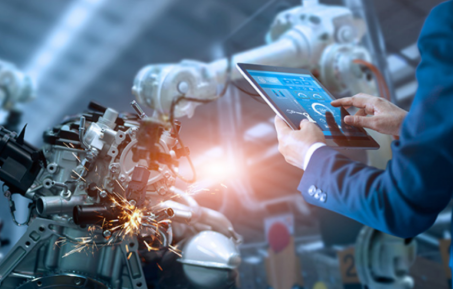The rise of automation is reshaping the landscape of employment across various sectors. Manufacturing and customer service are particularly vulnerable as machines and AI systems take over traditional roles. This shift raises critical questions about the future of work. What specific jobs will be most affected? Moreover, what new opportunities will emerge in this evolving environment? Understanding these dynamics is essential for both workers and employers navigating this transformation.
Jobs Most Affected by Automation
How significantly has automation reshaped the job landscape? The impact of automation is particularly pronounced in sectors such as manufacturing and customer service.
In manufacturing, robotic systems and AI-driven machinery have streamlined production processes, leading to a reduction in traditional manufacturing jobs. Tasks once performed by humans are increasingly executed by machines, resulting in enhanced efficiency but diminished employment opportunities.
Similarly, in customer service, automated chatbots and self-service kiosks are transforming the way businesses interact with consumers. While these innovations improve response times and reduce costs, they also displace human workers, altering the dynamics of job availability.
The ongoing evolution of automation presents both challenges and opportunities, necessitating a reevaluation of workforce strategies in affected industries.
Read more: How Augmented Reality Is Changing Retail Experiences
Emerging Roles in the Age of Automation
As automation continues to transform various industries, new roles are emerging that require a blend of technical skills and human-centric capabilities.
Data analysts are becoming increasingly essential, as organizations seek to interpret vast amounts of information generated by automated systems. These professionals play a critical role in enabling informed decision-making by translating data into actionable insights.
Meanwhile, automation specialists are tasked with implementing and managing automated solutions, ensuring that technology aligns seamlessly with business objectives.
The rise of these positions highlights a shift towards a workforce that values both analytical proficiency and interpersonal skills.
As companies adapt to this evolving landscape, the demand for such roles will likely grow, emphasizing the importance of integrating human intelligence with technological advancements.
Skills for Success in an Automated Workforce
Navigating the complexities of an automated workforce requires a distinct set of skills that blend technical proficiency with adaptability.
Digital literacy has become paramount, enabling individuals to interact effectively with advanced technologies. Workers must possess a robust understanding of software tools, data analytics, and automation processes to thrive in this evolving landscape.
Additionally, the emphasis on continuous learning is crucial, as the rapid pace of technological change demands an agile mindset. Professionals must actively seek opportunities for skill enhancement, whether through formal education or self-directed study.
Ultimately, those who embrace these competencies will not only secure their relevance but also foster an environment of innovation and growth, empowering them to navigate the challenges posed by automation with confidence and resilience.
Strategies for Adapting to Change
While change is an inherent aspect of any workplace, effectively adapting to it requires deliberate strategies that can mitigate disruption and foster resilience. Organizations should prioritize robust change management frameworks that facilitate clear communication and employee involvement.
By engaging staff in the change process, companies can enhance employee resilience, enabling individuals to navigate transitions more effectively. Training programs, focused on skill development and emotional intelligence, are essential to equip employees with the tools necessary for adaptation.
Additionally, fostering a culture of continuous learning encourages flexibility and innovation, empowering workers to embrace change rather than resist it. Monitoring employee feedback during transitions allows organizations to refine their strategies, ensuring a supportive environment that nurtures adaptability in an increasingly automated landscape.
Conclusion
As the landscape of employment undergoes a profound transformation, certain roles will gracefully yield to the advancements of automation, paving the way for a new era. This shift, while resulting in a reduction of traditional positions, simultaneously heralds the emergence of innovative opportunities that demand a fusion of technical prowess and interpersonal finesse. Adaptability will be the cornerstone of success in this evolving paradigm, necessitating a proactive approach to skill development and career navigation in an increasingly automated world.



